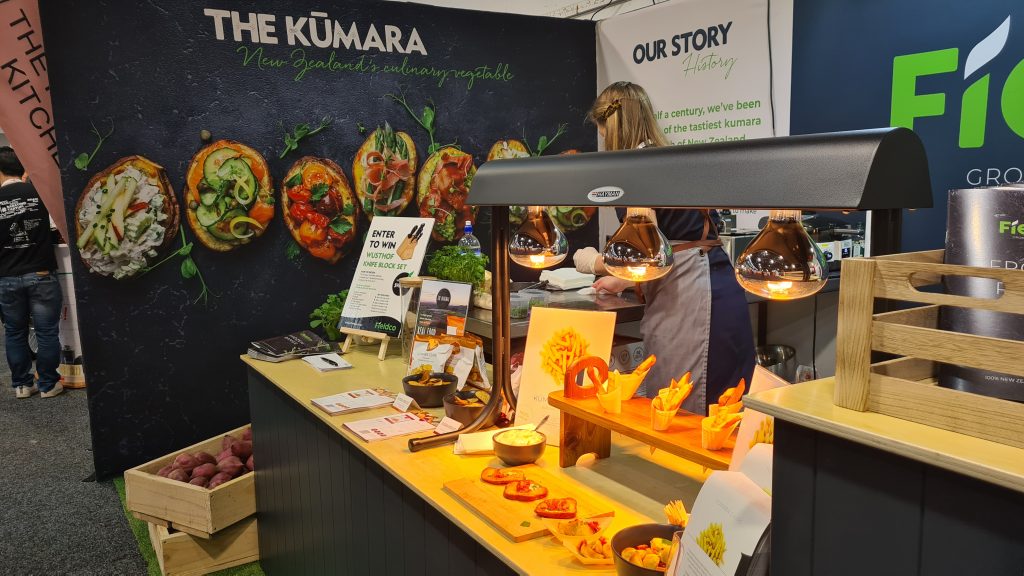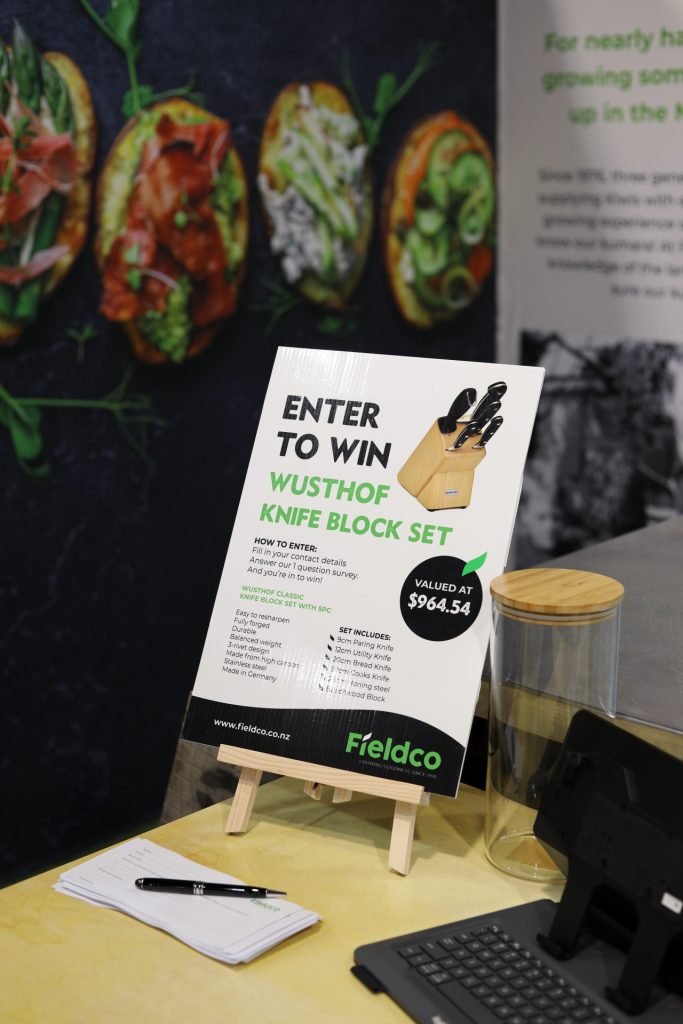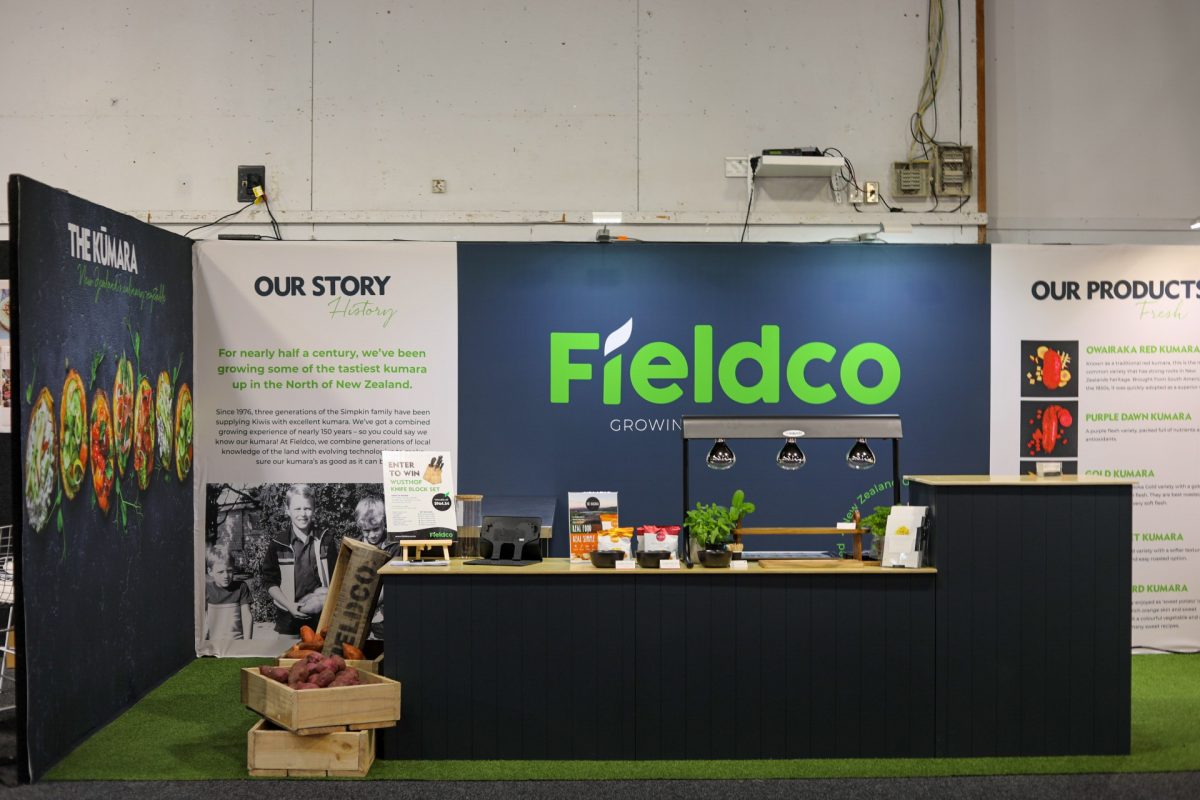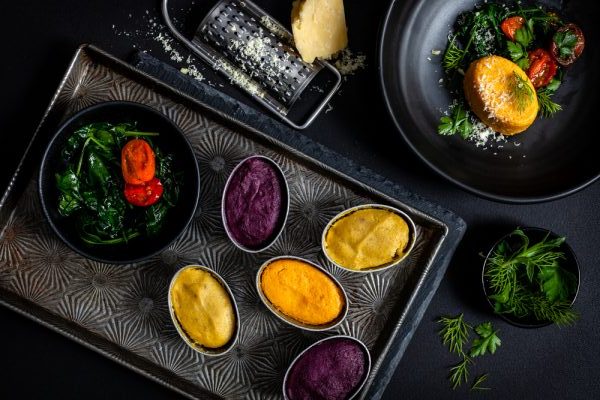Fine Food Show New Zealand is the largest hospitality, food service and food retail event in the country. It was held on the 13th – 15th June this year, at the ASB Showgrounds in Auckland.
We had a fantastic 3 days at the Fine Food Show, where we were able to tell our grower story and engage with customers face-to-face. The team really enjoyed the opportunity to hear valuable first-hand feedback and find out more about current trends and insights from like-minded people in the food industry.
At this event, we were all about kumara, aka New Zealand Sweet Potato. We displayed our full range of New Zealand Grown and Made frozen kumara products, giving people the chance to taste-test and get direct feedback from those in the industry.
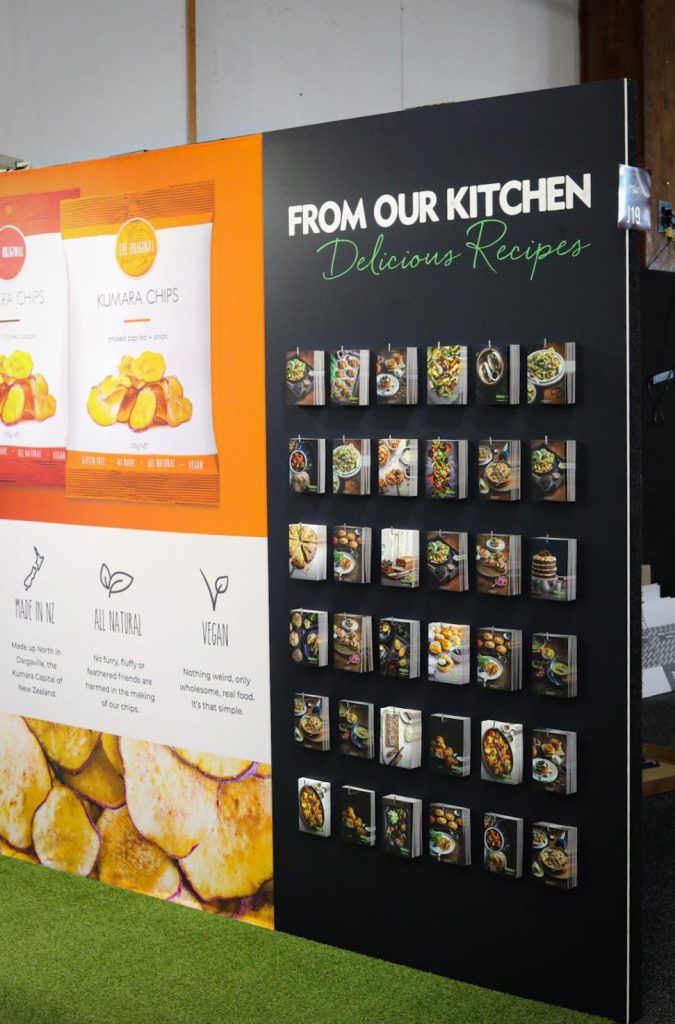
We had a full range of recipes heroing kumara, which was a big hit! So many delicious and new ways to try kumara – everything from kumara souffles, spring salads to tasty kumara cake.

Over the course of this 3-day event, we ran a competition for a 5-piece Wusthof Knife Set. Simply enter our 2 question survey and you were in the draw to win! Congratulations to our lucky winner, Julia Behse from Collective Hospitality in Auckland!
A big thank you to all the organizers from EXPO Exhibitions and Fine food. All in all, a very successful event.

